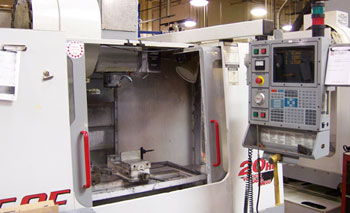

High-Tech Manufacturer
hile its name may brew visions of hops and grains, CoorsTek is in fact a high-tech ceramics manufacturer with facilities in North America, Europe and Asia. Once part of the Adolph Coors Company, but now a separate private firm,

CoorsTek supplies critical components for industries including aerospace, automotive, medical, semiconductor, power generation and telecommunications.
CoorsTek, the largest technical ceramics manufacturer in North America, operates 14 plants in the U.S., five of which are in Colorado, with the remainder in California, Oregon, Texas, Oklahoma, Arkansas and Tennessee. Each state has its own personal property tax laws.
The manufacturing of high-tech ceramic products is hard on highly specialized equipment such as CoorsTek’s CNC (Computer Numerical Control) machines, and that poses a challenge at tax time. Equipment used to produce ceramic products lasts five to seven years, compared to a life span of 10 to 15 years for similar equipment used to manufacture metal products.
“The life of our equipment is much shorter,” says Cece Schmidt, a longtime CoorsTek consultant, who handles accounting for all of the company’s personal property and sales and use taxes. “Ceramic dust gets into every nook and cranny of CNC machines. We have to work with assessors to get obsolesences on shorter equipment life.”
Schmidt has used Tax Compliance Inc.’s Property Tax Management System (PTMS) software for the past four years to complete personal property taxes for the company regarding its manufacturing equipment, furniture and fixtures. She says the software makes her task easier and less time consuming than the previous method of downloading information into an Excel program. She says PTMS has trimmed an hour to two hours off the time required to fill out personal property tax renditions for a facility with more than 1,000 assets.
“In figuring out the accrual for the property tax bill, PTMS has a report that gives you the estimated accrual per department,” Schmidt says. “When we were still using Excel it took several hours to figure out how much needed to be allocated by department. So, using PTMS has saved me a lot of time.”
Schmidt says TCI constantly updates the software and regularly solicits input. She says the software is user friendly.
“They really want to know what we think since we are the ones working with forms. We have asked them to tweak a form. For example, in one California county where we have four buildings, the county uses their own tax form and doesn’t use the state’s. PTMS was able to get the form, and the next year they had the form available in the software.”
PTMS, currently used by about 530 companies, also handles real estate tax compliance. The latest version of PTMS has added enhanced asset-mapping tools and has expanded its Appeal Manager function to include all property types and automatic real-time assessment comparison during tax bill entry. PTMS users can now map asset categories to jurisdictional classifications in one step.
Most PTMS clients use the software for a combination of real and personal property tax functions, says Mike Dobbins, TCI’s senior marketing manager. This includes a diverse group ranging from heavy manufacturers to large retail chains to telecom companies to energy firms. Coming up for PTMS is a release of the software in the dot-net platform, along with a new, streamlined, user-friendly billing module.
Site Selection Online – The magazine of Corporate Real Estate Strategy and Area Economic Development.
©2008 Conway Data, Inc. All rights reserved. SiteNet data is from many sources and not warranted to be accurate or current.